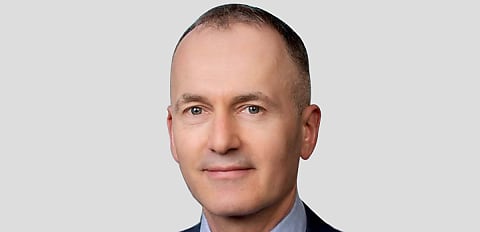Speaking at the KangaNews DCM Summit on Monday (20 March), Reserve Bank of Australia (RBA) assistant governor Christopher Kent explained that a high number of fixed-rate home loans have lengthened the time it currently takes for monetary policy to affect spending via its effect on the cash flows of borrowers.
“Unlike variable-rate borrowers, whose required mortgage repayments have risen alongside increases in the cash rate, fixed-rate borrowers face a large and delayed jump in their mortgage payments, depending on the term of their fixed-rate loan,” Mr Kent said.
“Fixed-rate loans peaked slightly above 35 per cent of all housing credit in early 2022, compared with a pre-pandemic average of closer to 20 per cent. While fixed-rate loans have been rolling off since then, and borrowers have generally switched onto variable-rate loans, this adjustment still has some way to play out.”
The unusually high share of fixed-rate loans when the RBA started to tighten monetary policy has added an extra delay to the pass-through to outstanding mortgage rates. Since last May, the average outstanding mortgage rate across all loans has increased by around 110 bps less than the cash rate, despite 350 bps of hikes.
“More than half of this difference owes to the effect of fixed-rate mortgages that haven’t yet rolled onto higher interest rates,” Mr Kent said.
“Also, the average outstanding rate for variable-rate mortgages has risen by around 40 bps less than the cash rate as a result of competition among lenders for good-quality borrowers.”
It could be argued that the Reserve Bank may not have needed to lift rates as aggressively if fixed-rate loans were closer to their 20 per cent average, rather than 35 per cent, as the transmission of higher rates would have impacted a greater number of Australians.
However, how fixed-rate borrowers will be impacted remains uncertain, Mr Kent said.
“One issue is the extent to which fixed-rate borrowers make adjustments in anticipation of rolling over to a higher rate mortgage to better smooth their spending,” he said.
“If all fixed-rate borrowers did this to a significant degree, it would mean that the timing of the cash flow channel would be largely invariant to the share of fixed-rate borrowers. But that seems unlikely. I suspect many fixed-rate borrowers do not adjust their spending in advance, but rather wait until they roll onto the higher rate.
“Even those that are more forward-looking are likely to make moderate adjustments at first, with further adjustments required at the time of the switch. Hence, despite the potential for some forward-looking behaviour, it is plausible that the high share of fixed-rate loans has contributed to a longer lag for the cash flow channel.”
Mr Kent’s comments are at odds with those made by RBA governor Philip Lowe, who told a Senate committee last month that he believed most borrowers on fixed rates were already adjusting their spending.
“The banks tell us that people with fixed rate loans — most of them — have been pretty cautious,” Mr Lowe told the committee at the time,” Mr Lowe said.
“They knew interest rates weren’t going to stay low forever.”
[Related: Opinion: RBA ignoring the cold hard facts about how we spend]
